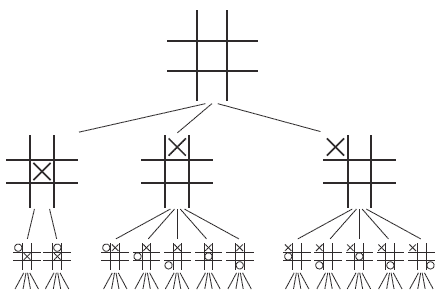Race Strategy
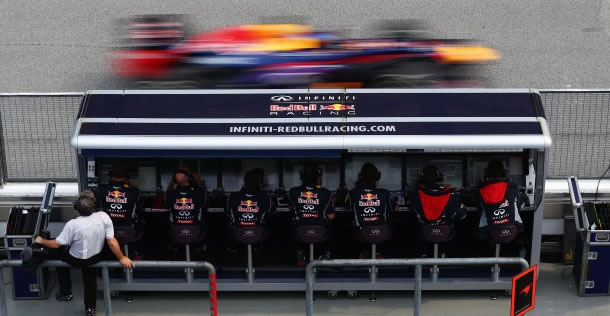
Part science, part dark art of guessing- a race strategy is essential to winning races. Or losing them. There is a load of basic variables strategist have to put into equation: fuel load, tire wear, overtaking possibilities on given track, traffic, weather forecasts, the length of the pit lane, likelihood of the safety car, quality of the driver, constantly changing situation on the track, along with a host of other factors. Also, race strategy is constantly evolving, passing through transitions when rule changes are introduced. Each year on same track, race strategy will evolve in something different, with only general guidelines taken from previous experiences.
It seems like common sense to think that a car that never stops is going to finish ahead of someone who is heading into the pit lane several times over a race. Yet pit stops remain a key part of Formula One. By stopping and making changes to the car you can actually go quicker between pit stops, overcoming the time taken to make the stops in the first place. Imagine a car making two stops over the course of a race to change tires, taking a total of 50 seconds. Your fresher tires then get you to the chequered flag 51 seconds before you otherwise would have. Despite stopping two times, you've reached the finish-line one second earlier, potentially wining the race.
Formula One is such big business, with so much resting on victory that the decision of when to stop can no longer be left to gut instinct like 30 years ago. Operational researchers build mathematical models which can crunch data on relative track positions, fuel consumption, tire wear and weather conditions, along with a host of other factors. These computer models can run millions of scenarios simultaneously and find the strategies most likely to succeed. They can even say how likely they are to work. This allows team bosses to understand the relative risks associated with each strategy and decide which course to take. The group of people responsible for that is composed of a balanced mix of mathematical modeling and software engineering experts.
In "F1 magazine" (February 2015) there was an interview with Pat Symonds, Williams Formula 1 team Chief Technical Officer, and he was talking about racing strategies:
Q: "What sort of computer-based techniques do you use to assist in tactical decision making?
A: If the parameters that affect the outcome were all deterministic, we could just use mathematical and statistical techniques to guide us to the best outcome. The primary method we use is one known as a "Monte Carlo simulation". This is a long-established statistical technique whereby a large number of Virtual races are run, each with different parameters, and pitstop laps are applied to all the cars. The many thousands of results are then analyzed to determine the probability of a given outcome for a particular set of decisions. If we relied on this alone, it is likely that everyone would come up with similar answers, so we also apply a technique known as "Game Theory". This covers many mathematical techniques but, for example, takes the knowledge that people will deviate from a deterministic optimum to take advantage of the undercut.
With this assumption we modify our tactics to try to counter their move."
So, what is "Monte Carlo simulation" and "Game Theory" he was talking about?
When computers entered Formula 1, strategy software was a standalone application which was run pre-race by race engineers at trackside. The engineers had the result like this:
"A one stop is quicker than a two stop".
During the time numerous enhancements were incorporated, however the big breakthrough was the use of Monte Carlo techniques in 1998. This allowed teams to consider all cars in the race, traffic patterns, probability of safety cars, overtaking and other random events. The results were with outputs like this:
"If we make a two-stop strategy we give ourselves approximately 20 per cent exposure to finishing 1st or 2nd, but if we get stuck in traffic, we will most likely finish 7th or below; however if we undertake a one-stop strategy we will most likely finish 3rd or 4th position, but unlikely to finish as high as 1st or as low as 7th".
So for the first time from the simulation team could visualize the risk associated with each option, and therefore a risk could be taken into consideration. All of the development was still offline and analysis was carried out pre-race. There were no data feeds which they were able to use to run real time, other than manually typing in the time gap to the car of interest on each lap to determine whether car is ahead of or behind predicted schedule.
The next leap was in 2001 when the FOM first provided live electronic timing data for all cars. This enabled in-race strategy to be undertaken in a more real-time way. Further, it allowed teams to run real time Monte Carlo simulations to answer questions like:
"Given the race information to the current lap, what is the best action to undertake if our competitor executes a three stop strategy?"
or
"What is the best strategy for our competitors to use?"
The number of permutations during formula 1 race is so vast that not even the world's fastest supercomputer could crank through them all for each race. This is where the Monte Carlo simulation comes in.
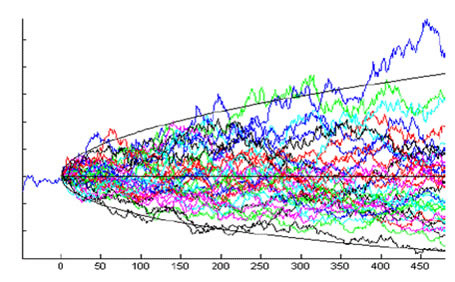
Monte Carlo simulation is a technique that uses randomly generated numbers in order to approximate the outcome. This is a Stochastic Model where we have many random variables - rather than one simple function - and need to obtain a range of results. This method can be used to describe any technique that approximates solutions to quantitative problems through statistical sampling. The idea behind simulation is to imitate a real-world situation mathematically, to study its properties and operating characteristics, to draw conclusions and make action decisions based on the results of the simulation. Hence, it is a type of simulation that explicitly and quantitatively represents uncertainties by specifying inputs as probability distributions.
Whereas the result of a single simulation of an uncertain system is a qualified statement:
"With 3 pitstops we will finish 3rd"
the result of a probabilistic (Monte Carlo) simulation is a quantified probability:
"With 3 pitstops, there is a 20% chance that we will finish 3rd"
Such a result (in this case, quantifying the race position) is typically much more useful to decision-makers who utilize the simulation results. Monte Carlo simulation is perhaps the most common technique for propagating the uncertainty in the various aspects of a system (system is in our case a race itself) to the predicted performance. In these simulations, the entire system is simulated millions of times. Each simulation is equally likely to happened, referred to as a realization of the system.
|
For each realization, all of the uncertain parameters are sampled (i.e., a single random value is selected from the specified distribution describing each parameter). The system is then simulated through time (given the particular set of input parameters) so that the performance of the system can be computed. This result is a large number of separate and independent results, each representing a possible "future" for the system (i.e., one possible path the system may follow through time). The results of the independent system realizations are assembled into probability distributions of possible outcomes. As a result, the outputs are not single values, but probability distributions.
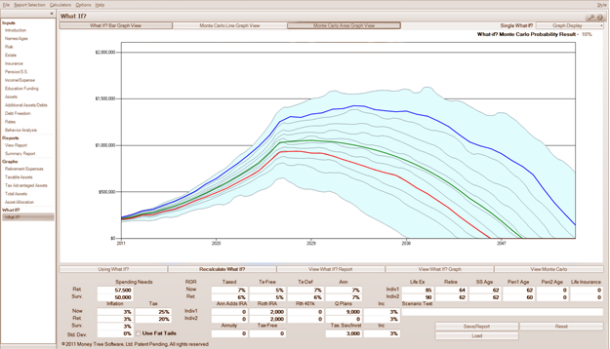
Instead of plodding through each scenario, race strategists capture its essence using a probability distribution, a set of values reflecting the relative odds of any given event taking place. They then dip into this set of values at random - just like a roulette ball in Monte Carlo - and combine the result with random values taken from all the other probability distributions. Repeated millions of times, the end result is a realistic simulation of the race and the strategy giving the best odds of winning.
Developed in the 1940s by scientists working on thermonuclear weapons, Monte Carlo simulation in F1 was pioneered during the 1990s by Neil Martin, who joined McLaren as a mathematics graduate from Southampton University. Martin's brilliance as a race strategist made headlines following the 2005 Monaco Grand Prix, when a crash prompted rival teams to make pit-stops. Refusing to follow the pack, Martin advised McLaren's driver Kimi Raikkonen to keep driving - ensuring he kept his lead, and won the race.
While teams typically run millions of Monte Carlo simulations for each race, they can still be caught out by totally unexpected events. In such cases, there is nothing else to do but to run new simulations while the race is still in progress. As speed is of the essence, the teams at the race venue keep fast data-links open to their engineering HQs, where supercomputers crunch through the new data.
The problem is when the new circuit has never hosted a grand prix race before, there's no historical data to work with. Yet without solid, reliable input, the Monte Carlo simulations cannot work their magic.
Monte Carlo simulation can give you a probable outcome of race. But this simulation can't take into account interaction between different parties. Computer scientists and mathematicians are increasingly interested in resolving the problems in situations where multiple self-interested parties interact. To act optimally in such situation, each player must take into account how the other players are likely to act. Game theory studies how this should be done, and it provides various solution concepts which prescribe how players should act when the actions of other players affect their game or strategy. In this way, Game theory software will review these concepts, as well as operationalize them by providing algorithms to compute the solutions.
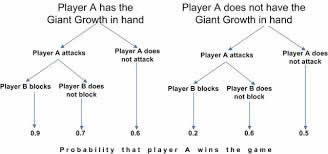
The primary use of game theory is to describe and model how human populations behave. Game theory is the mathematical model of decision making which study the conflict, strategic interaction and cooperation between intelligent rational decision-makers, between two or more players in a situation containing set of rules and outcomes, in which interacting choices of game playing produce outcomes with respect to the preferences (or utilities) of those players, where the outcomes in question might have been intended by none of the participant.
An alternative name suggested as a more descriptive name for the discipline is "interactive decision theory". While used in a number of disciplines, game theory is most notably used as a tool within the study of economics. The economic application of game theory can be a valuable tool to aide in the fundamental analysis of industries, sectors and any strategic interaction between two or more firms. Recently, however, evolutionary game theory has become of increased interest to sociologists, anthropologists and social scientists in general, as well as sport strategy prediction.
Any time we have a situation with two or more players that involves known payouts or quantifiable consequences, we can use game theory to help determine the most likely outcomes.
Let's start out by defining a few terms commonly used in the study of game theory:
- Game: Any set of circumstances that has a result dependent on the actions of two of more decision makers ("players")
- Players: A strategic decision maker within the context of the game
- Strategy: A complete plan of action a player will take given the set of circumstances that might arise within the game
- Payoff: The payout a player receives from arriving at a particular outcome. The payout can be in any quantifiable form, from dollars or utility to first place in race.
- Information Set: The information available at a given point in the game. The term information set is most usually applied when the game has a sequential component.
- Equilibrium: The point in a game where both players have made their decisions and an outcome is reached.
The games studied in game theory are well-defined mathematical objects. To be fully defined and to deduce a set of equilibrium, a game must specify the following essential elements: the players of the game, the information and actions available to each player at each decision point, and the payoffs for each outcome. When a game is presented in normal form, it is presumed that each player acts simultaneously or, at least, without knowing the actions of the other. If players have some information about the choices of other players, the game is usually presented in extensive form.
|
It is assumed that players within the game are rational and will strive to maximize their payoffs in the game. The number of players in a game can theoretically be infinite, but most games will be put into the context of two players. By using simple methods of game theory, we can solve for what would be a confusing array of outcomes in a real-world situation.
The modern mathematical theory of games was invented by John von Neumann and Oskar Morgenstern 1944, but the first known discussion of game theory occurred in a letter written by James Waldegrave in 1713. Limitations in their mathematical framework initially made the theory applicable only under special and limited conditions. This situation has dramatically changed over the past, as the framework has been deepened and generalized. However, since at least the late 1970s it has been possible to say with confidence that game theory is the most important and useful tool for the analyst's.

Back to the top of the page

